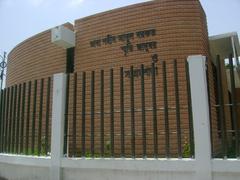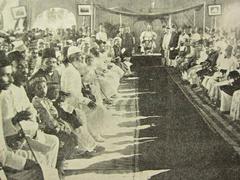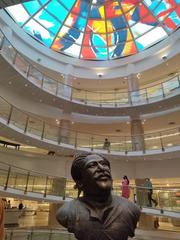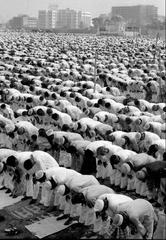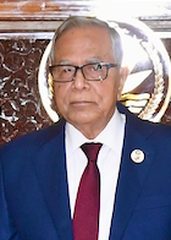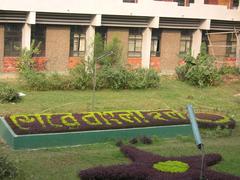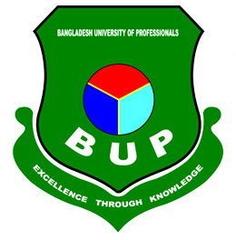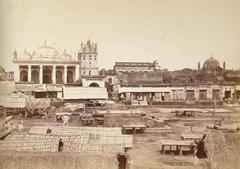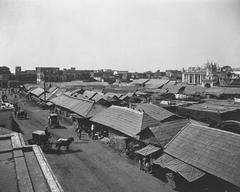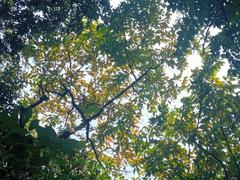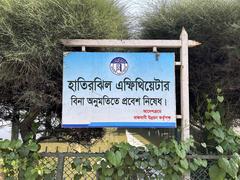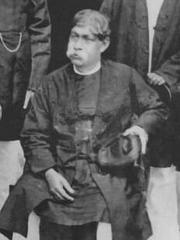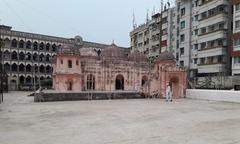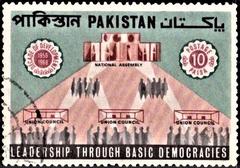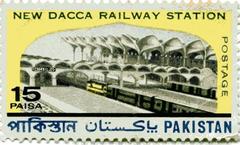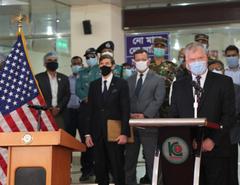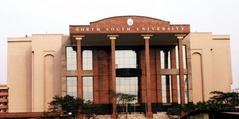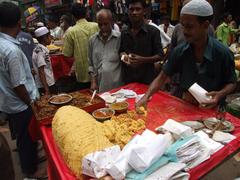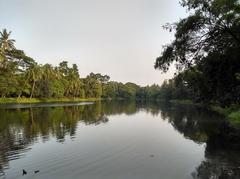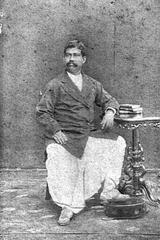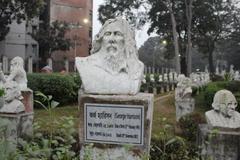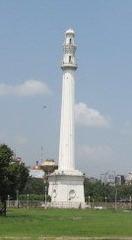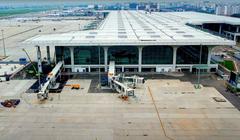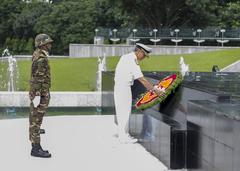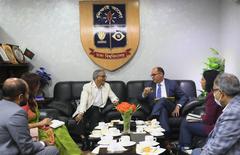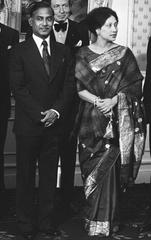Bangladesh National Museum Dhaka: Visiting Hours, Tickets, and Comprehensive Guide
Date: 14/06/2025
Introduction
Located in the vibrant Shahbag district, the Bangladesh National Museum is the country’s principal institution for preserving and displaying Bangladesh’s cultural, artistic, and historical legacy. Established in 1913 as the Dhaka Museum and transformed into the National Museum in 1983, it has evolved to become a dynamic center for education, research, and cultural engagement. This guide provides detailed, up-to-date information for visitors—including history, galleries, visiting hours, ticketing, facilities, and practical tips—to ensure a memorable and enriching museum experience (Bangladesh National Museum Official Site; Lonely Planet; Yogsutra).
Historical Background and Significance
Early Foundations: Dhaka Museum (1913–1983)
The museum was founded as the Dhaka Museum in 1913 by the Dhaka Municipality, initially focusing on archaeological artifacts, coins, and manuscripts from Bengal (HollyMelody). During the colonial era, it played a crucial role in documenting and preserving the region’s heritage.
Transition to National Museum (1983)
Responding to the need for expanded space and broader institutional mandates, the museum relocated to a purpose-built facility in Shahbag and was designated the Bangladesh National Museum in 1983 (TouristPlaces.com.bd). The new structure facilitated conservation, research, public engagement, and the display of an ever-growing collection.
Institutional Role
Since Bangladesh’s independence in 1971, the museum has served as a focal point for national pride, education, and social cohesion. Its Liberation War Gallery, ethnographic collections, and diverse programming reflect the country’s journey from ancient civilizations through the independence movement to the modern era (Lonely Planet).
Collections and Thematic Galleries
The Bangladesh National Museum houses over 85,000 objects across four main floors, organized by departments and themes (Bangladesh National Museum Official Site):
History and Classical Art
- Stone Sculptures & Terracotta: Buddhist, Hindu, and Jain sculptures, including the renowned Pala-era Tara statue and terracotta plaques from Mahasthangarh.
- Coins & Inscriptions: Rare coins from the Mauryan, Gupta, Pala, and Sultanate periods.
- Manuscripts & Calligraphy: Ancient palm-leaf manuscripts and fine Arabic and Persian calligraphy.
Ethnography and Decorative Art
- Textiles & Traditional Attire: Handwoven jamdanis and tribal costumes.
- Musical Instruments & Folk Art: Traditional instruments and festival masks.
- Rural Life: Household tools, pottery, and fishing implements.
Contemporary and World Civilization
- Liberation War Gallery: Powerful exhibits documenting the 1971 Liberation War, including the Declaration of Independence and personal effects of martyrs (Dhaka Tribune).
- Modern Art: Paintings by notable Bangladeshi artists such as Zainul Abedin.
- International Exhibits: Rotating displays of global artifacts.
Natural History
- Flora and Fauna: Dioramas and taxidermy of the Royal Bengal Tiger and native birds.
- Geology and Fossils: Rocks, minerals, and fossils from prehistoric eras.
Special Exhibitions and Educational Programs
The museum regularly hosts temporary exhibitions on contemporary art, archaeology, and pressing social issues. Educational outreach includes seminars, workshops, lectures, and competitions to foster public engagement and academic research (The Daily Star; universepg.com).
Visiting Information
Location and Directions
- Address: Shahbag, Dhaka, Bangladesh
- Proximity: Near Dhaka University, Curzon Hall, and major transport terminals (Yogsutra)
- Getting There: Accessible by bus, taxi, CNG auto-rickshaw, and ride-sharing apps. Parking is limited.
Opening Hours
Opening hours may vary seasonally and during Ramadan—always confirm before your visit.
- April–September (Summer):
- Saturday–Wednesday: 10:30 AM – 5:30 PM
- Friday: 3:00 PM – 8:00 PM
- Thursday: Closed
- October–March (Winter):
- Saturday–Wednesday: 9:30 AM – 4:30 PM
- Friday: 2:30 PM – 7:30 PM
- Thursday: Closed
- During Ramadan: Reduced hours, typically 9:30 AM – 3:00 PM
Admission Fees
- Bangladeshi Citizens: 20–50 BDT (varies by age and status)
- Students: 10–20 BDT (with valid ID)
- Foreign Nationals: 100–500 BDT
- Children under 5 and persons with disabilities: Free
Always check the official ticket page for updates.
Visitor Facilities and Accessibility
- Wheelchair Access: Ramps and elevators are available, though some areas may have limited access.
- Restrooms: Available on each floor, including accessible facilities.
- Guided Tours: Bookable in advance in Bangla and English—recommended for first-time visitors.
- Workshops & Lectures: Regular educational events.
- Cafeteria & Museum Shop: Ground floor amenities for refreshments and souvenirs.
- Reading Room & Library: For students and researchers, with internet access.
- Prayer Room: Available for visitors.
(Triphobo)
Security and Visitor Guidelines
- Security screening at entry; large bags stored in cloakroom.
- Non-flash photography is permitted in most galleries; restrictions apply in some areas.
- Dress modestly and respect local customs.
- Supervise children and keep personal belongings secure.
Planning Your Visit: Tips and Recommendations
- Best Time: Weekday mornings are least crowded; October–February offers the best weather (MakeMyTrip).
- Duration: Allocate 2–3 hours for a comprehensive tour.
- Cash: Tickets are generally cash-only; bring Bangladeshi Taka.
- Map: Collect a floor map at the entrance for efficient navigation.
- Stay Hydrated: Bring water, especially in summer.
- Check Events: Inquire about special exhibitions or temporary galleries on arrival or via the official website.
Nearby Attractions and Accommodation
- Dhaka University Campus: Adjacent, known for historic architecture and vibrant culture.
- Curzon Hall: Colonial-era landmark within walking distance.
- Lalbagh Fort, Ahsan Manzil, Ramna Park, Suhrawardy Udyan: Notable historical and recreational sites.
- Accommodation: Options nearby include Ruposhi Bangla Hotel and Sonargaon Pan Pacific Hotel (Yogsutra).
Notable Artifacts and Must-See Highlights
- Tara Statue: Iconic Pala-era sculpture.
- Liberation War Memorabilia: Declaration of Independence, Sheikh Mujibur Rahman’s shirt.
- Jamdani Saris: UNESCO-recognized handwoven textiles (UNESCO Jamdani).
- Natural History Dioramas: Bengal Tiger, Asian elephants, and more.
Virtual Access and Digital Resources
Explore virtual tours, digital exhibitions, and high-quality images through the museum’s official website.
Frequently Asked Questions (FAQ)
Q: What are current opening hours?
A: Typically Saturday–Wednesday (10:30 AM – 5:30 PM or 9:30 AM – 4:30 PM, seasonally), Friday afternoons/evenings, closed Thursdays and public holidays.
Q: How much are tickets?
A: 20–50 BDT for locals, 100–500 BDT for foreigners. Free for young children and persons with disabilities.
Q: Are guided tours available?
A: Yes, in Bangla and English—book at the information desk or in advance.
Q: Is the museum wheelchair accessible?
A: Yes, with ramps and elevators.
Q: Can I take photos inside?
A: Non-flash photography is allowed in most areas; check for restrictions.
Q: Are there nearby attractions?
A: Yes—Dhaka University, Curzon Hall, Lalbagh Fort, Ahsan Manzil, and city parks.
Practical Summary and Visitor Checklist
- Plan ahead: Check hours and events before your visit.
- Arrive early: Avoid crowds, especially on weekends.
- Bring cash: For tickets and purchases.
- Dress modestly: Respect local customs.
- Explore nearby: Combine your visit with other Dhaka landmarks.
References and Further Reading
- Bangladesh National Museum Official Site
- Lonely Planet
- Yogsutra
- Humbo.com
- TriptourBD
- HollyMelody
- TouristPlaces.com.bd
- Dhaka Tribune
- The Daily Star
- universepg.com
- UK Essays
- Banglapedia
- Triphobo
- MakeMyTrip
- UNESCO Jamdani
